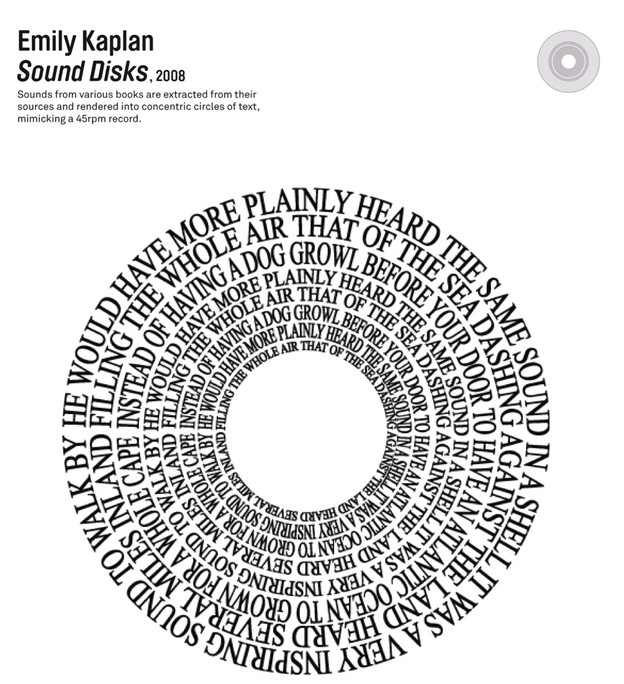Writing the way Christian Marclay deals with sound: 'Cover without a record'
Kenneth Goldsmith's seminar on writing about contemporary art

A 2008 publication, Cover without a Record, was created by students and faculty who were part of an experimental year-long seminar co-sponsored by the Center for Programs in Contemporary Writing (CPCW) and the Institute of Contemporary Art (ICA) here at Penn. Cover without a Record works with — plays off, as it were — the then-current Christian Marclay exhibit at the ICA. In Marclay’s work, the artworks are based on the idea of and artifacts of sound, LPs, album covers, the shape of records, the material of cassette tape, etc. The students, many of them writers, and their teacher, Kenneth Goldsmith, created a catalogue-length response in this publication that transfers or extracts sound and/or sound-based art into language of some kind. So in Cover without a Record, whose jacket is white yet somewhat faintly embossed with concentric ridges in the shape and size of a 45 rpm single, includes the following, among others:
[] a piece of writing that consists of descriptions of sounds in twenty-seven books extracted from their sources;
[] sounds from various books extracted from their sources and rendered into concentric circles of text, mimicking a 45 rpm record -- thus a series of concrete poems;
[] the titles of every track from The White Album removed from their corresponding song lyrics;
[] a piece called Mobius Thunderclaps which is described by its creator, Steve McLaughlin, as follows: "When cut out, twisted, and joined at the ends, the shapes on the following pages form small Mobius strips. Each bears a looped version of one of James Joyce's thunderclaps: ten 100-letter words scattered through the novel Finnegan's Wake."
[] sound effects extracted from a series of comic books, placed on top of musical staves;
[] gunshot scenes from various films, transcribed and collaged into a unified screenplay;
and more.
The whole work can be found at writing.upenn.edu/ica/2008/.
Here is certainly the place (one of several) to thank the dean of the School of Arts & Sciences, Rebecca Bushnell, and Penn’s provost at the time, Ron Daniels, for providing grants to enable this innovative year-long seminar to happen.